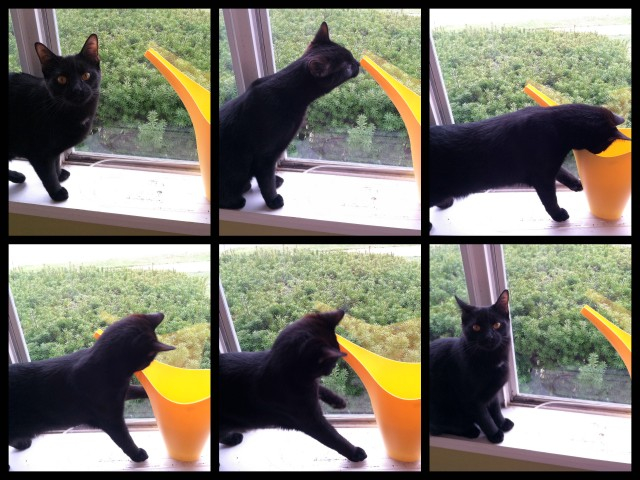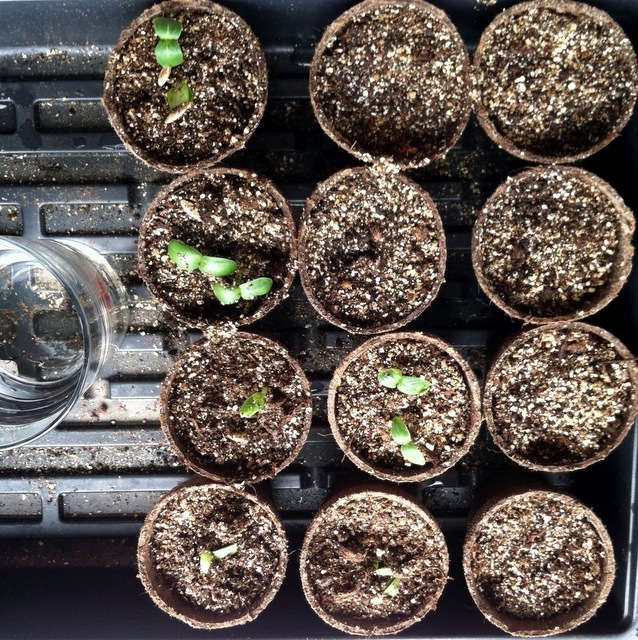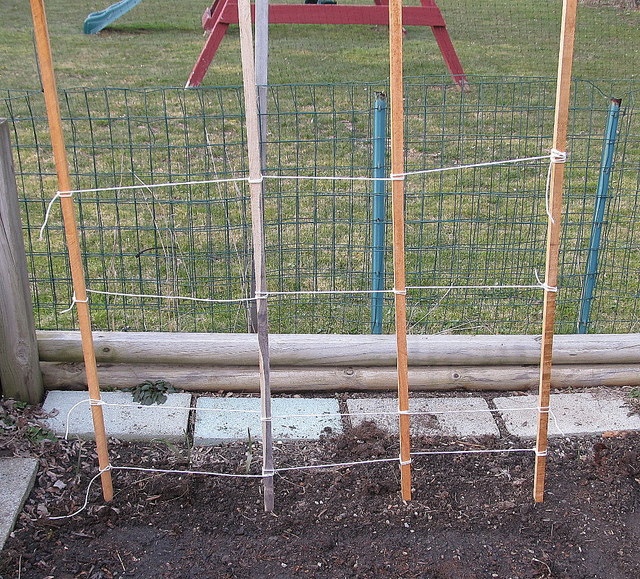...and that something is
seeds!
This year I decided I'm going to try and start as many of my plants as possible from seeds. Last weekend was quite busy, with plenty of assistance from one of my favorite helpers...
 |
| The catnip seeds have since been moved to a secure location. |
The supplies for this project included those little peat pots you see in the background (I bought 100, which should actually be enough for next year too), a bag of "seed starting mix," and, of course, the seeds. I chose these little pots because they are actually biodegradable and you can plant them right in the ground (or, alternatively, just lift the seedlings out... but at least you have the option of either).
Seed starting mix is a very lightweight topsoil - it is not expensive (I think my bag cost $3.99) but has the right nutrient mix for starting seeds.
In terms of seeds, I have to say I have no regard for what brand I purchased - I just chose varieties that looked interesting.
I planted 6 pots of each (except for the San Marzano tomatoes, which I planted 10 of, because they are my favorite), with two seeds in each pot. I'd really like to make sure I have 2-3 viable seedlings of each. And if I have too many - well, I am sure my friends and family wouldn't mind the castoffs (or, they will find a home in the compost pile!). But better to be safe than sorry.
These seedlings will live on our enclosed porch where there is a lot of sun. Last year I was able to grow some seedlings (not this many) out there with no added light. Hopefully it will also work this year, and if not I can add a fluorescent light (but I'll cross that bridge when I come to it).
I did this year buy those clear lids to put over the trays - to create more of a greenhouse effect, especially when they are first starting to germinate.
One positive is that our porch isn't heated - which means the air will not be super dry. One negative is that our porch is not heated - which means it may not be all that warm, especially on days when there's not a lot of sun. You can sort of see in this picture in the left tray that I put a small glass of water in the middle - to provide a tiny bit of humidity. I can also add a space heater when needed.
Another negative is that someone is
really interested in this project.
 |
| He occasionally tries to be stealthy about it. |
Some of Fernando's favorite things include: the porch, jumping on windowsills, looking out windows, and glasses of water. A real recipe for disaster, but fortunately he hasn't learned to unlock doors yet.
PS: I need to make the addition here that I discovered after the fact that it is way too early to start cucumber seeds. They only need 2-3 weeks of growing indoors before you put them outside in the ground, and they can only go into the ground when it is warm! So... we'll see what happens. I have plenty of seeds left and will just need to remember to plant a few new pots in late April/early May.



















